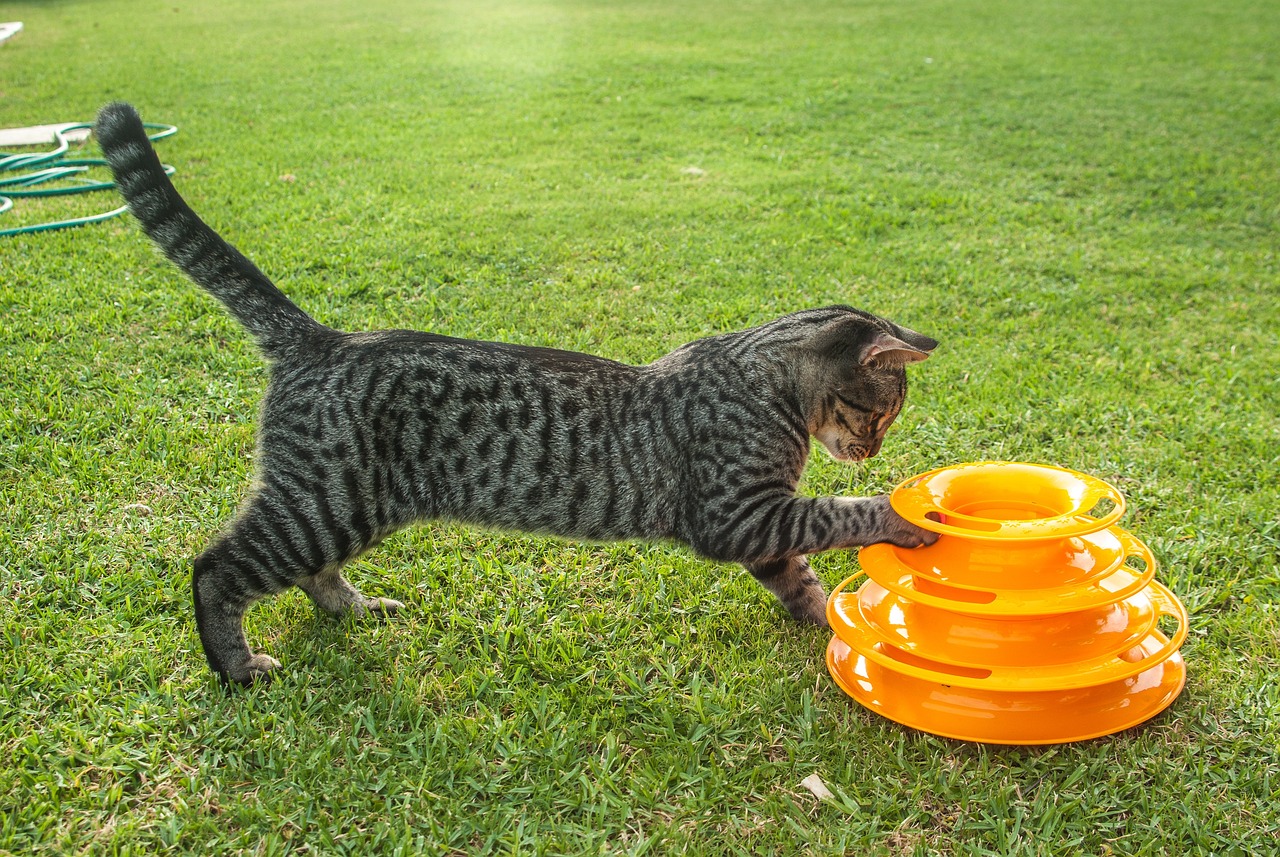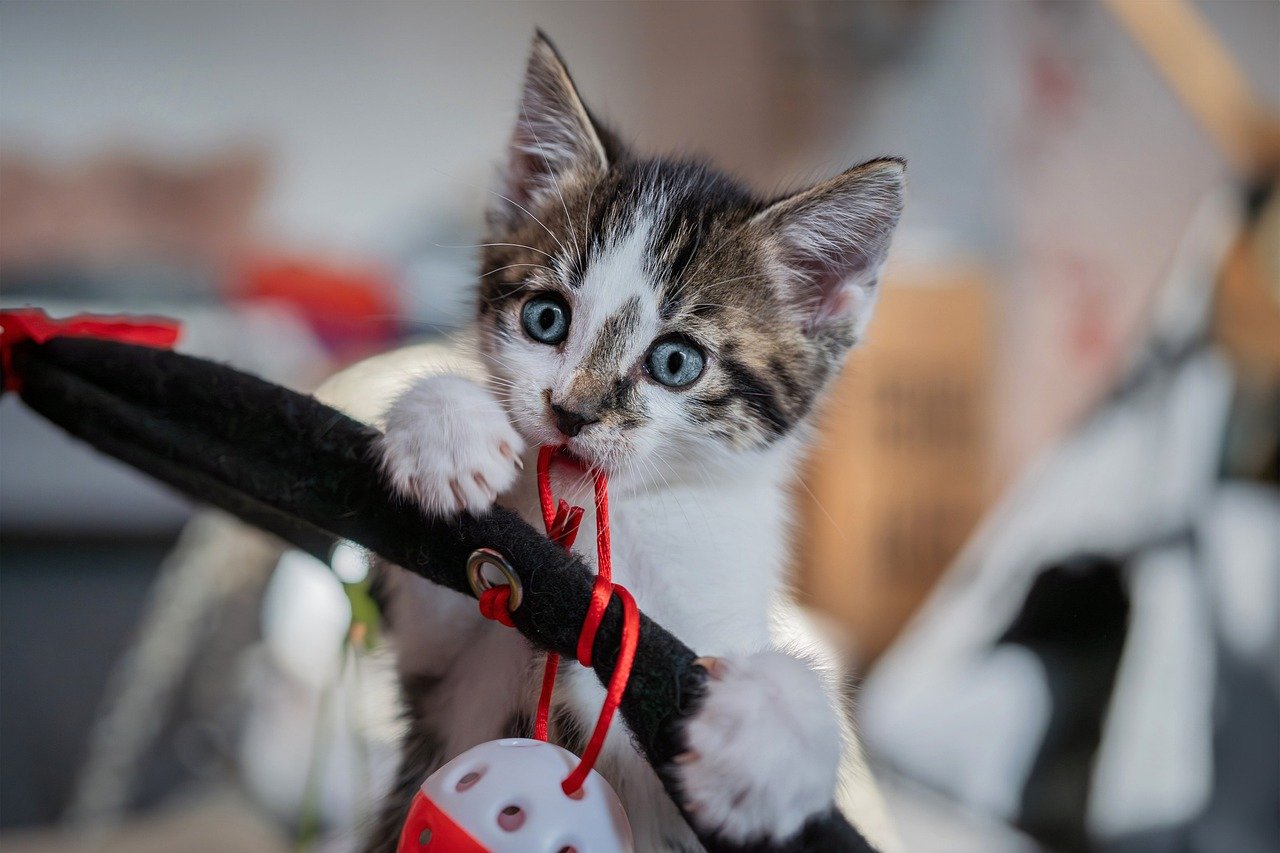Cats’ fascination with small, moving objects is a behavior deeply rooted in their predatory instincts and evolutionary history. This intriguing aspect of feline behavior is not merely a quirk but a complex interplay of biology, instinct, and environmental interaction. Understanding this fascination provides insights into cats’ natural behaviors and needs, revealing how domestication has shaped but not eradicated their inherent hunting skills. From a scientific perspective, this behavior manifests their survival mechanisms, honed over thousands of years. It highlights the importance of play in a cat’s life, serving as a form of physical exercise and mental stimulation. By examining the reasons behind this fascination, we can better understand our feline friends, ensuring we meet their needs in a domestic setting and enrich their lives as companions.

Predatory Instincts
The primary reason cats are drawn to small, moving objects lies in their predatory instincts. Cats are solitary hunters in the wild, relying on their keen senses to detect and capture prey. This instinctual behavior is deeply ingrained, and even though domestic cats do not need to hunt for survival, the instinct persists. When a cat sees a small, moving object, it mimics the stimuli of potential prey, triggering their innate urge to stalk, pounce, and capture. This instinctual drive is a form of play and a crucial aspect of their behavioral repertoire, allowing them to practice and maintain their hunting skills in a safe and controlled environment.
Sensory Stimulation
Cats’ sensory systems are highly developed, particularly their vision, hearing, and tactile senses, which are crucial for detecting movement. Small, moving objects stimulate these senses, providing a form of sensory enrichment that is both engaging and mentally stimulating. For instance, cats have a specific area in their retina, known as the area centralis, which is densely packed with light-sensitive cells and is highly sensitive to motion. This adaptation allows them to detect even the slightest movements, making chasing small objects incredibly rewarding. Additionally, their whiskers are highly sensitive to changes in air currents, which can indicate the movement of potential prey or toys nearby. This sensory stimulation is vital for their mental health and well-being, keeping them alert and active.
Play and Learning
Engaging with small, moving objects is also a crucial component of play and learning for cats, especially during their kittenhood. Through play, kittens learn essential life skills such as hunting, stalking, and coordinating movements. This play behavior is not only essential for their physical development but also for their cognitive and social skills. For adult cats, play continues to be important in maintaining their physical health, preventing boredom, and reducing stress. The fascination with moving objects provides a safe outlet for their natural behaviors, ensuring they remain physically fit and mentally sharp.
Territory and Control
Interacting with small, moving objects also allows cats to exercise control over their environment. In the wild, controlling their territory is crucial for survival, and hunting is a part of this territorial behavior. Cats express this natural territorial instinct by capturing and “controlling” these objects within their domestic environment. This control over their immediate surroundings can increase confidence and reduce anxiety, contributing to their overall sense of security and well-being in a domestic setting.
Stress Relief and Entertainment
For many cats, chasing and playing with small, moving objects is a form of stress relief and entertainment. It provides a constructive outlet for their energy, helping alleviate boredom and preventing problematic behaviors. This type of play can be essential for indoor cats, who may have fewer physical activity and exploration opportunities. Engaging in play with toys that mimic the movement of prey can harmlessly satisfy their hunting instincts, providing them with both physical exercise and mental stimulation.
Cats’ fascination with small, moving objects is a multifaceted behavior encompassing their predatory instincts, sensory stimulation, need for play and learning, territorial behaviors, and desire for stress relief and entertainment. Understanding the science behind this fascination allows cat owners to provide appropriate toys and play opportunities that satisfy their instincts and enrich their lives. By acknowledging and catering to these inherent needs, we can ensure our feline companions lead fulfilled, happy, and healthy lives within the confines of domestic living.


